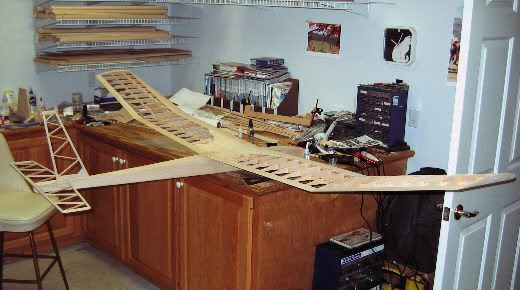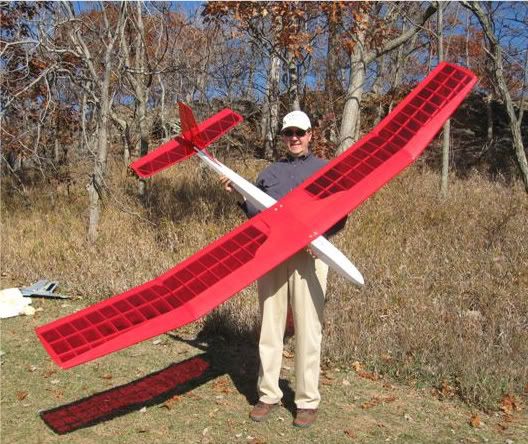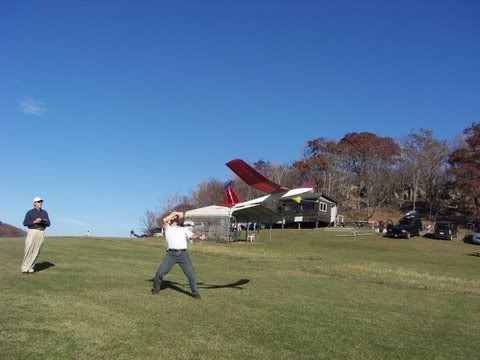Just about every sailplane pilot either started with or at least has had some stick time on a Carl Goldberg Gentle Lady. Larry, one of the guys in our local club had a Gentle Lady that he would hand launch and make multiple circles before landing and doing it again. After watching him have so much fun, I decided to build my own Gentle Lady. Following the "lighter is better" school of thought, we carefully constructed the airframe with Carl Goldberg Super Jet instant glue and covered it with MonoKote, nice and light weight!
Hand launching my Gentle Lady proved frustrating...I was lucky to make a 180 degree turn and get back to my feet, much less the multiple circles Larry was making!
So what was the reason? One day while flying with Larry, I asked him if I could see his plane. When he handed it me it was like lifting a brick!!!!
Lead weight added, problem solved.
Fast forward to 2009. Funny that prior to meeting LenB for the first time I was already leaning toward the "bigger is better" school of thought. During the winter of 2009, I decided to scratch build a 10' span version of the Gentle Lady...the Ginormous Lady...the Giant Gentle Lady.
Here is the uncovered airframe sitting on my 8' long workbench. Wow, I thought it was huge!

The completed model at the 2009 Cumberland, MD Fall Soar for Fun.

The first flight.



So...how did it fly?
Back to school...built it very light...very short flight...would not penetrate into even a slight breeze...lesson learned, AGAIN!"
Added a bunch of lead and it was a totally different sailplane.
Point is, consider the optimum AUW (All Up Weight) of the sailplane you are building and then judge whether it is better to have a stronger but heavier airframe structure or added lead weight!
Hand launching my Gentle Lady proved frustrating...I was lucky to make a 180 degree turn and get back to my feet, much less the multiple circles Larry was making!
So what was the reason? One day while flying with Larry, I asked him if I could see his plane. When he handed it me it was like lifting a brick!!!!
Lead weight added, problem solved.
Fast forward to 2009. Funny that prior to meeting LenB for the first time I was already leaning toward the "bigger is better" school of thought. During the winter of 2009, I decided to scratch build a 10' span version of the Gentle Lady...the Ginormous Lady...the Giant Gentle Lady.
Here is the uncovered airframe sitting on my 8' long workbench. Wow, I thought it was huge!

The completed model at the 2009 Cumberland, MD Fall Soar for Fun.

The first flight.



So...how did it fly?
Back to school...built it very light...very short flight...would not penetrate into even a slight breeze...lesson learned, AGAIN!"
Added a bunch of lead and it was a totally different sailplane.
Point is, consider the optimum AUW (All Up Weight) of the sailplane you are building and then judge whether it is better to have a stronger but heavier airframe structure or added lead weight!






Comment